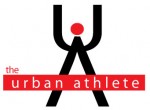Categories: exercise biomechanics
This article is purely conjecture. I have no hard data and would not even know how to create a study to test for it. BUT, I consider it biological plausible.
Tightness is a common sensation for people with pain and for athletes during training. However, when someone reports being tight in a region I find that they rarely are. Their range of motion will be wonderful, perceptually their tissue will feel “loose” upon palpation (warning: highly subjective on my part) yet they report tightness. Main point being there are no objective signs of tightness or limits in their range of motion. So why does the perception of tightness occur? (more…)
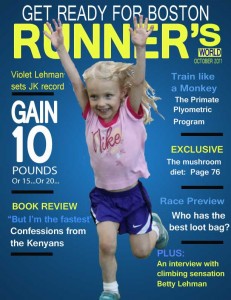 Audience: Runners and therapists
Audience: Runners and therapists
Purpose: A reference to compare running technique
Limitations: Many of us assume that there is one right and better way to run. Deviations from that ideal are assumed to lead to injuries and decreased economy. This is still a debatable concept. Everything I write can be questioned so please do so.
Below is a video of Nicole Stevenson (www.nicolestevenson.com). Nicole is Canada’s former number 1 in the Marathon with a personal best below 2:33. Nicole is also a running coach
I wanted to highlight some probably beneficial components of her running gait. Future posts will look a deviations from this gait and how they might relate to injury. (more…)
Audience: Therapists and patients with too much time on their hands
Purpose: Provide a mild critique of the utility of the prone hip extension test
Background
The prone hip extension test (or prone leg extension - PLE) is a very common clinical test in use for more than 20 years. Two influential clinicians have advocated its use although for slightly different reasons. Both Vladmir Janda and Shirley Sahrmann have described its use for decades. This blog will focus more on the clinical rationale that Janda proposed.
(more…)
Audience: Runners
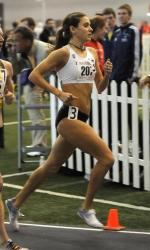 Purpose: To give a pictorial basic background into the movements that occur in the sagital plane (i.e. looking from the side) of the lower extremity during running at 3.1 meters/second (about a 5 minute km) and “sprinting” at 3.9 meters per second (about a 4.17 minute km). (more…)
Purpose: To give a pictorial basic background into the movements that occur in the sagital plane (i.e. looking from the side) of the lower extremity during running at 3.1 meters/second (about a 5 minute km) and “sprinting” at 3.9 meters per second (about a 4.17 minute km). (more…)
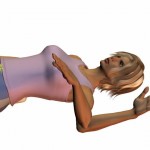
Subscapularis Exercise
Audience: Primarily my Patients in Toronto but other Physiotherapists, ATs, Chiropractors and Strength and Conditioning Pros may like this
Purpose: Review the literature for safe and effective exercises for shoulder rehabilitation of the Rotator Cuff - primarily for the treatment of the finding of shoulder impingement
Sources: Initially, this was going to be a larger review. However, I have just focused on the main points from the work of Mike Reinold who published a great review in JOSPT (2008), Mike can be read at (www.mikereinold.com). A recent review by Rafael Escamilla (Sports Medicine 2009) is also an excellent resource. (more…)
Audience: Therapists
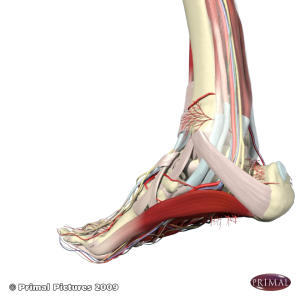 Functional Hallux Limitis (FHL) is a decrease in the dorsiflexion of the big toe during gait. This limitation is assumed to be “functional” and is not structural. This means that simply pushing the big toe into dorsiflexion will not identify whether there is a functional problem.
Functional Hallux Limitis (FHL) is a decrease in the dorsiflexion of the big toe during gait. This limitation is assumed to be “functional” and is not structural. This means that simply pushing the big toe into dorsiflexion will not identify whether there is a functional problem.
This lack of dorsiflexion of the 1st MTP joint can be associated with a lack of plantar flexion of the 1st metatarsal (i.e. the 1st metatarsal may be hypermobile in that it translates/rotates dorsally) .
Howard Dananberg has written and theorized extensively on the topic and I believe he is credited with postulating how limitation in big toe dorsiflexion can have negative effects right up the kinetic chain culminating in low back dysfunction. (editors note: the following of how FHL influences ground contact time is wrong - wow, I was taught this years ago and still hear it . Dr. Dananberg wrote to correct me. I have stroked out what my original comment was and italicized the corrected version. However, my inaccuracy does not change what theoretically happens at the hip which is what I was most interested in. His comment is below) Very simply, Dr. Dananberg suggests that a limited big toe dorsiflexion results in a too early toe off (because the foot can’t stay on the ground long enough because of the lack dorsiflexion). This early toe . FHL may lead to a prolonged time to when the heel is raised off the ground. The prolonged ground contact may then leads to prolonged periods of flat foot. This abnormal function may lead to a decrease in hip extension which may cause the psoas and iliacus to actively fire to a greater degree than they would have had they been stretched with normal hip extension (i.e. a decrease in the elastic strain energy storage in the soft tissue structures anterior to the hip joint). I stress the use of the word “may” - While I greatly appreciate this theory and respect the thinking and work behind it I can’t find any biomechanical work (e.g. a kinematic analysis correlating these altered kinematics to one another and the Fhl) to support it. (more…)
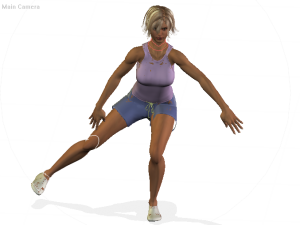 Attached is a basic exercise protocol as part of a large physiotherapy regime I might use for someone with some lower extremity dysfunction. Many of these exercises would be used for non specific knee pain (PFPS, ITB syndrome). The nordic hamstring exercise could be skipped but should certainly be used for anyone with posterior chain weakness/dysfunction. I use that ol’ nebulous word ‘dysfunction’ when something is wrong (e.g. pain) but I’m not willing to commit to some BS therapist jargon about the cause of the problem. You could put in the same room 5 great therapists (physiotherapists, chiropractors, massage therapists, sport med docs) who could all get someone better but they would each explain the problem completely different and often contradict each other. So, I use the general word dysfunction. (more…)
Attached is a basic exercise protocol as part of a large physiotherapy regime I might use for someone with some lower extremity dysfunction. Many of these exercises would be used for non specific knee pain (PFPS, ITB syndrome). The nordic hamstring exercise could be skipped but should certainly be used for anyone with posterior chain weakness/dysfunction. I use that ol’ nebulous word ‘dysfunction’ when something is wrong (e.g. pain) but I’m not willing to commit to some BS therapist jargon about the cause of the problem. You could put in the same room 5 great therapists (physiotherapists, chiropractors, massage therapists, sport med docs) who could all get someone better but they would each explain the problem completely different and often contradict each other. So, I use the general word dysfunction. (more…)
Intended Audience: anyone who has not already been doing this for years
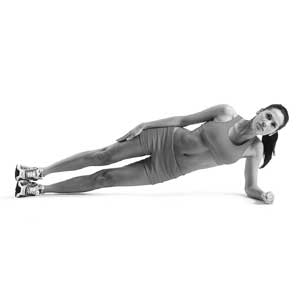
OK, OK. There is not just one perfect exercise for everyone. But this one comes close and for reasons you don’t expect. The side bridge is an exercise that is typically thrown into the category of the “core” and people think it is just done as a replacement for oblique ab crunches. While yes, it is a great replacement for that exercise it provides so much more. (more…)







